Mediterranean house exteriors embody the timeless charm of coastal European living, blending sun-soaked elegance with practical design elements. These architectural styles draw inspiration from Spain, Italy, and Greece, creating homes that feel both luxurious and welcoming. From terracotta roof tiles that catch the golden hour light to stucco walls that reflect the Mediterranean sun, these exterior designs emphasize indoor-outdoor living and natural materials. Modern interpretations continue to evolve, incorporating contemporary elements while maintaining the authentic warmth and character that define this beloved architectural style. Each design approach offers unique ways to transform your home into a Mediterranean retreat.
1. Classic Mediterranean House Exterior with Terracotta Roof
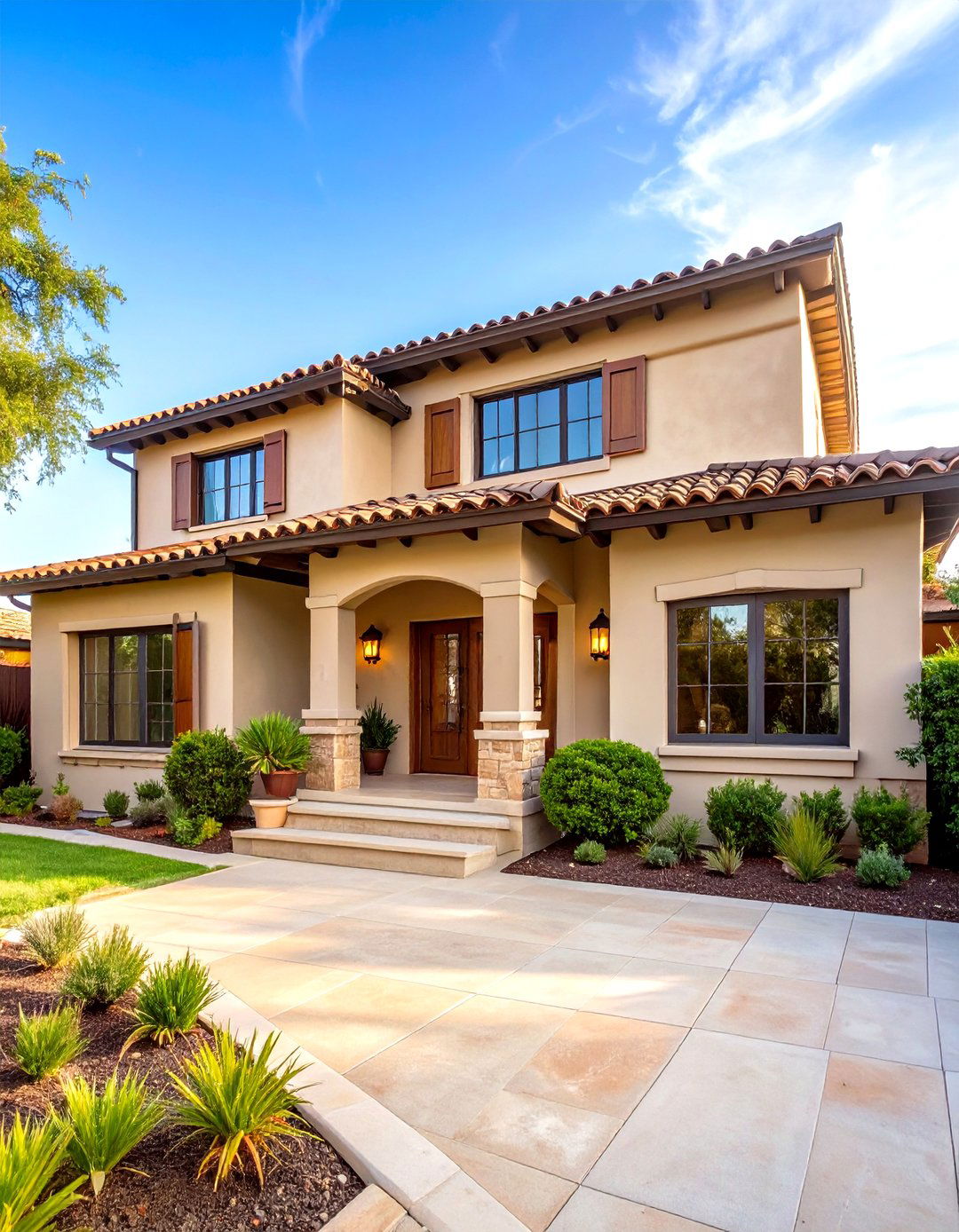
The quintessential Mediterranean house exterior features warm-toned stucco walls paired with traditional terracotta or clay tile roofs in rich red and orange hues. This timeless combination creates the perfect foundation for authentic Mediterranean design. Lighter-colored stucco in white, beige, or sandy tones provides a classic Mediterranean look, reflecting sunlight to create a bright, airy appearance. The curved terracotta tiles not only add visual texture but also provide excellent insulation and durability. These tiles age beautifully, adding character over time while maintaining their rustic yet refined appearance. Complete the look with wrought iron window details, wooden shutters, and lush landscaping featuring olive trees and lavender. This design perfectly captures the essence of a Mediterranean villa.
2. Modern Mediterranean House Exterior with Contemporary Lines
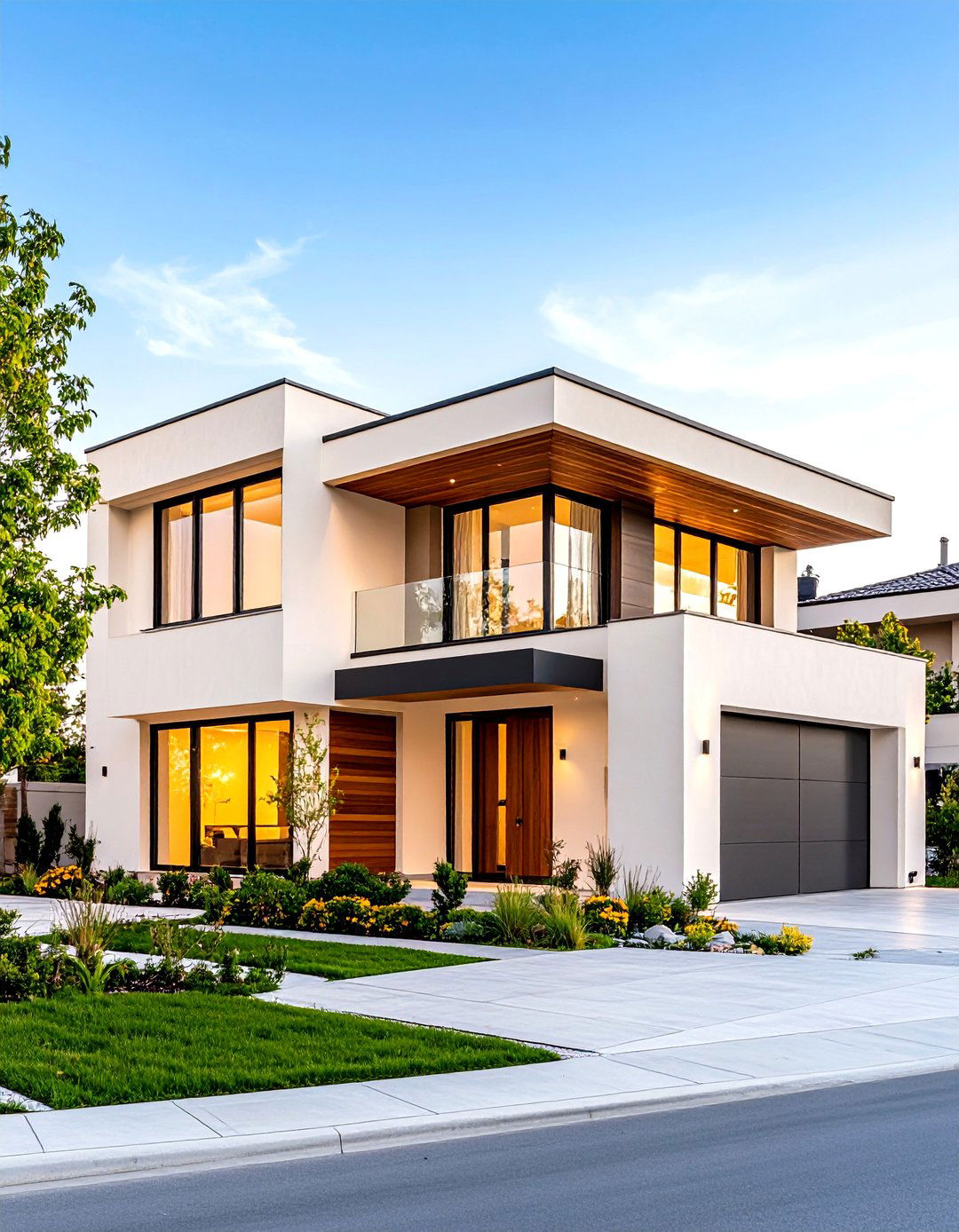
Modern Spanish Mediterranean homes seamlessly blend timeless charm with contemporary comforts, creating spaces that feel both luxurious and lived-in. This approach features clean, geometric lines while maintaining classic Mediterranean elements like stucco walls and tile roofs. Contemporary interpretations showcase smooth neutral-toned exteriors punctuated by sleek geometric shapes and clean lines creating a striking visual impact. Large floor-to-ceiling windows replace traditional smaller openings, maximizing natural light and creating seamless indoor-outdoor connections. The color palette focuses on minimalist whites and warm grays, with strategic pops of color through landscaping and architectural details. This design appeals to homeowners seeking Mediterranean charm with modern functionality and streamlined aesthetics.
3. Mediterranean House Exterior with Arched Doorways and Windows
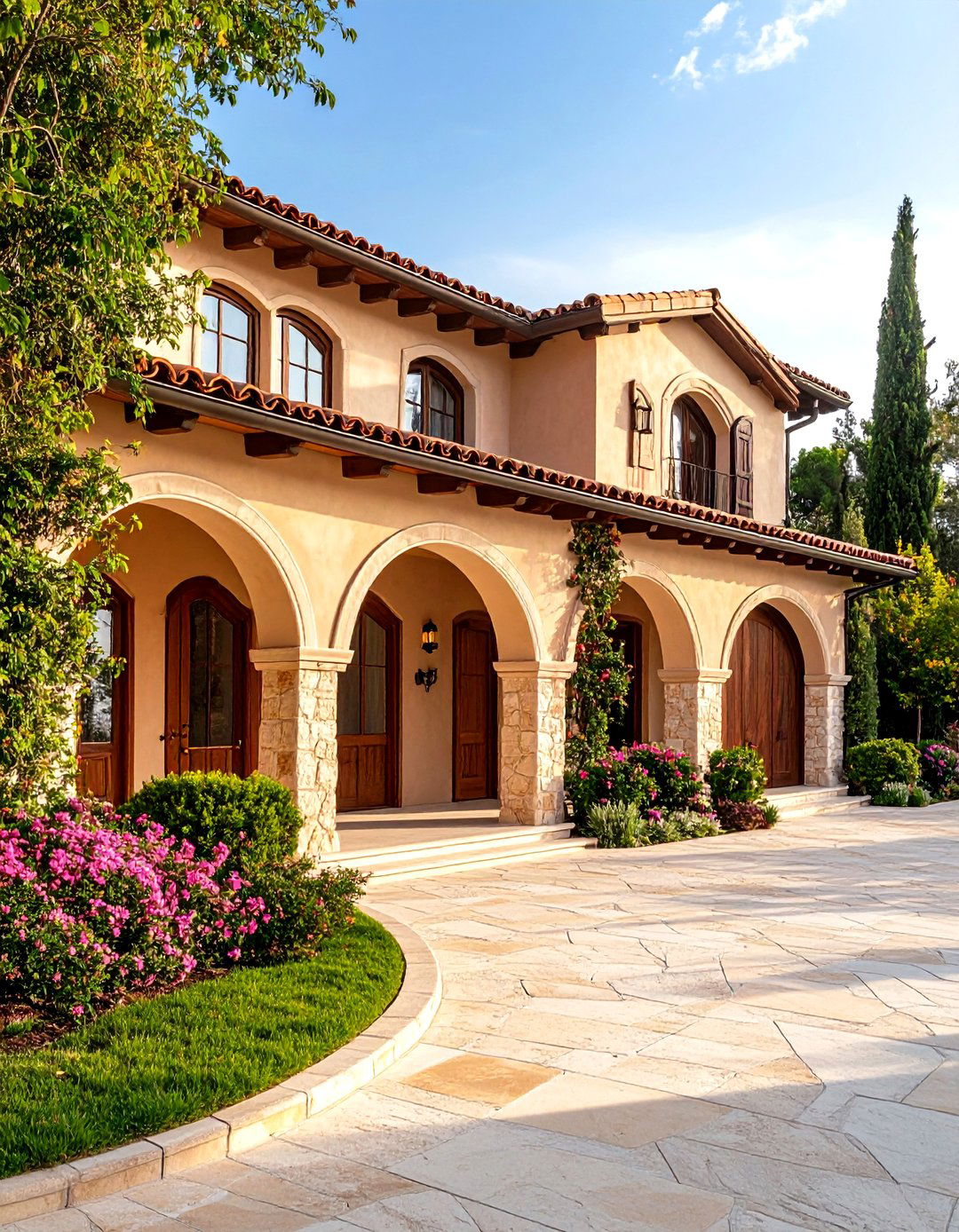
Arched doorways and windows are hallmarks of Mediterranean architecture, creating the distinctive old-world charm that defines this style. These graceful curves soften the overall facade while adding architectural interest and visual depth. Rounded arches are hallmarks of Mediterranean style, and detailed metalwork adorns balconies, windows, and courtyards. The arches can be crafted from stone, stucco, or precast concrete, often featuring keystone details that enhance their classical appearance. For an authentic look, consider adding arched doorways or windows framed by intricately carved stone details that transport you to the sun-drenched coasts of Spain. Pair these architectural elements with wrought iron fixtures and warm stucco walls in earthy tones to create a cohesive Mediterranean exterior that exudes timeless elegance.
4. Mediterranean House Exterior with Wrought Iron Balconies

Decorative balconies are an enchanting feature of Mediterranean homes, often adorned with wrought iron railings that provide both functionality and charm. A large Mediterranean house usually features multiple balconies on the second floor, fenced with wrought iron railings. These balconies create cozy outdoor spaces for enjoying views while enhancing the exterior's visual appeal by breaking up larger wall surfaces. The installation of wrought iron Mediterranean railings makes balconies safer while gaining a distinctive visual identity. The intricate scrollwork and artistic patterns in the ironwork add texture and cultural authenticity. Wrought iron is highly durable, withstanding various weather conditions while retaining its beauty, and when paired with warm stucco walls, these details enhance the old-world charm. Complete the design with climbing vines and potted plants on the balconies.
5. Mediterranean House Exterior with Enclosed Courtyard Design
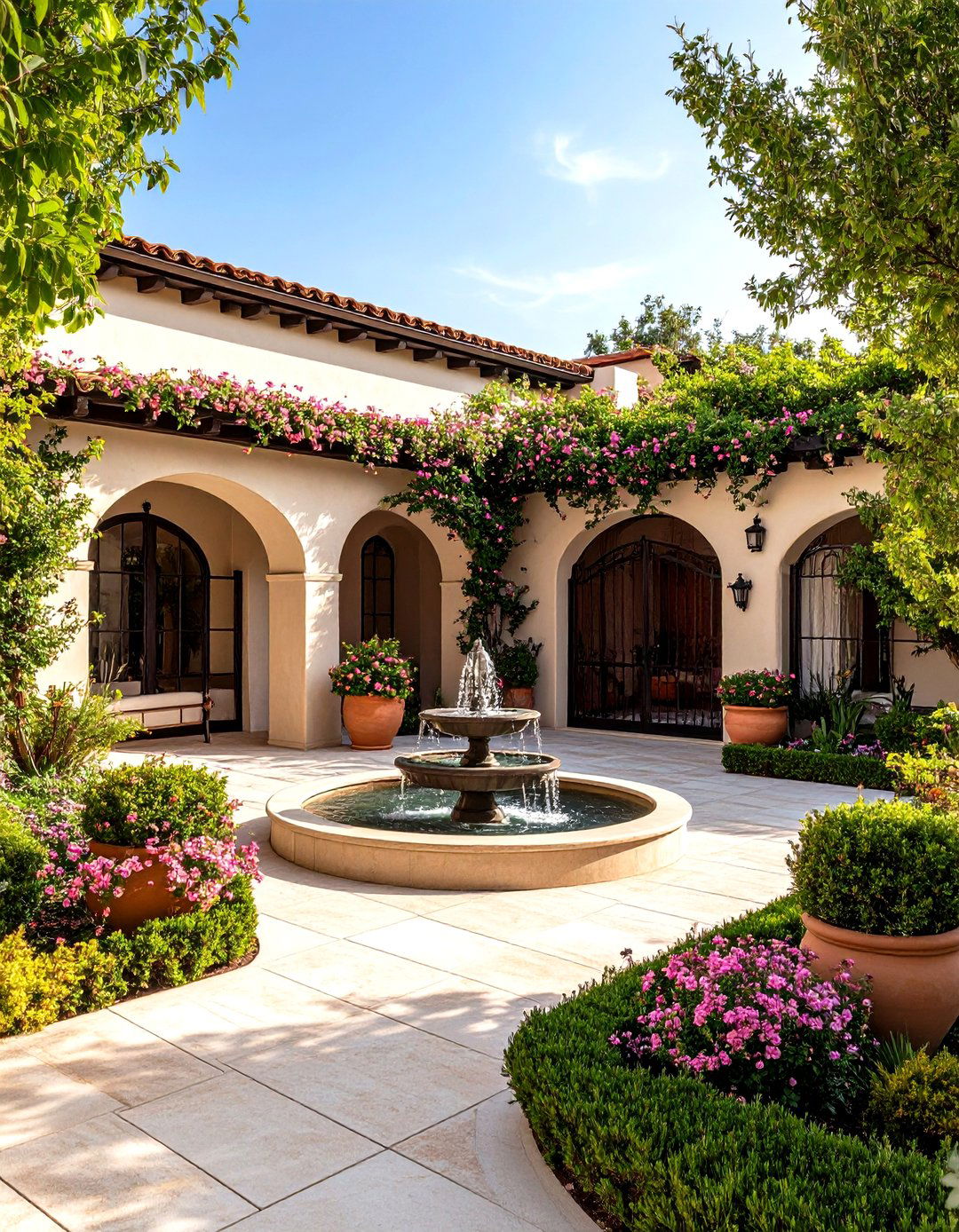
A Mediterranean courtyard provides a serene and private outdoor retreat, typically enclosed by stucco walls or stone facades, serving as a central gathering space. These courtyards follow curved paths rather than straight movement, taking cues from villa designs in Provence and Greek coastal residences. The enclosed design creates intimate spaces filled with fountains, tiled pathways, and lush greenery. Consider incorporating elements like wrought iron gates, colorful tiles, and climbing vines that add visual interest and provide a cool retreat during hot summer days. Terra cotta planters overflow with Mediterranean plants like bougainvillea and citrus trees. Adding a statement courtyard complete with a bubbling fountain creates a tranquil oasis at the heart of your home. This design emphasizes privacy and creates a perfect transition between indoor and outdoor living spaces.
6. Mediterranean House Exterior with Natural Stone Accents
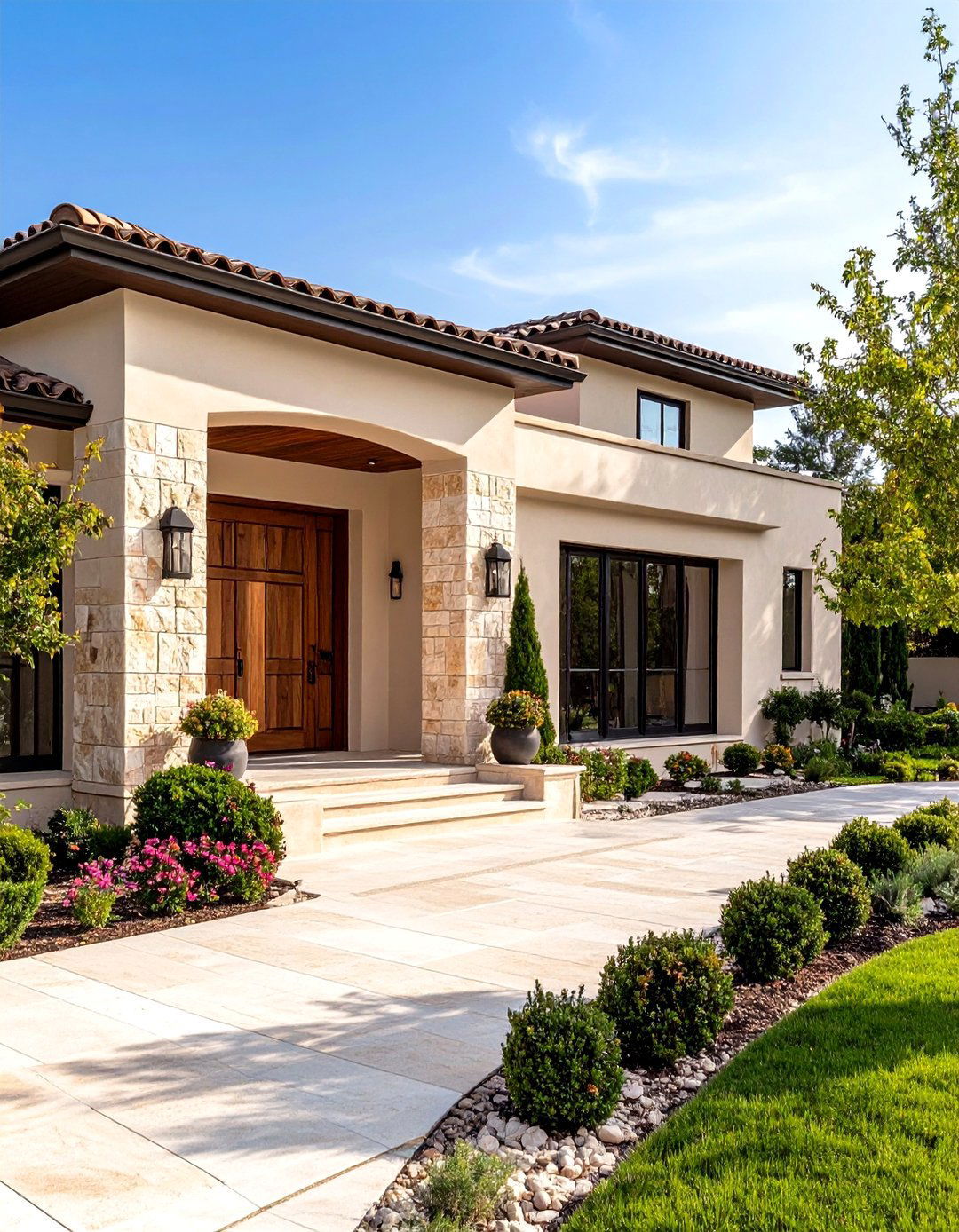
Mediterranean homes often feature a mix of stucco and natural materials like stone and wood, with stone cladding adding texture and dimension to the exterior. Natural stone accents around doorways, windows, and architectural features create stunning focal points against smooth stucco walls. The stucco color complements natural stone accents around arched entryways, enhancing the timeless appeal. The exterior building is typically smooth or stone and often features a soft tonal color rather than bright white. Stone elements can include decorative columns, window surrounds, and foundation treatments that ground the home in its landscape. Choose limestone, travertine, or sandstone that complements your region's natural materials. The combination of smooth stucco and textured stone creates visual interest while maintaining the Mediterranean aesthetic's inherent warmth and authenticity.
7. Mediterranean House Exterior with Colorful Stucco Walls
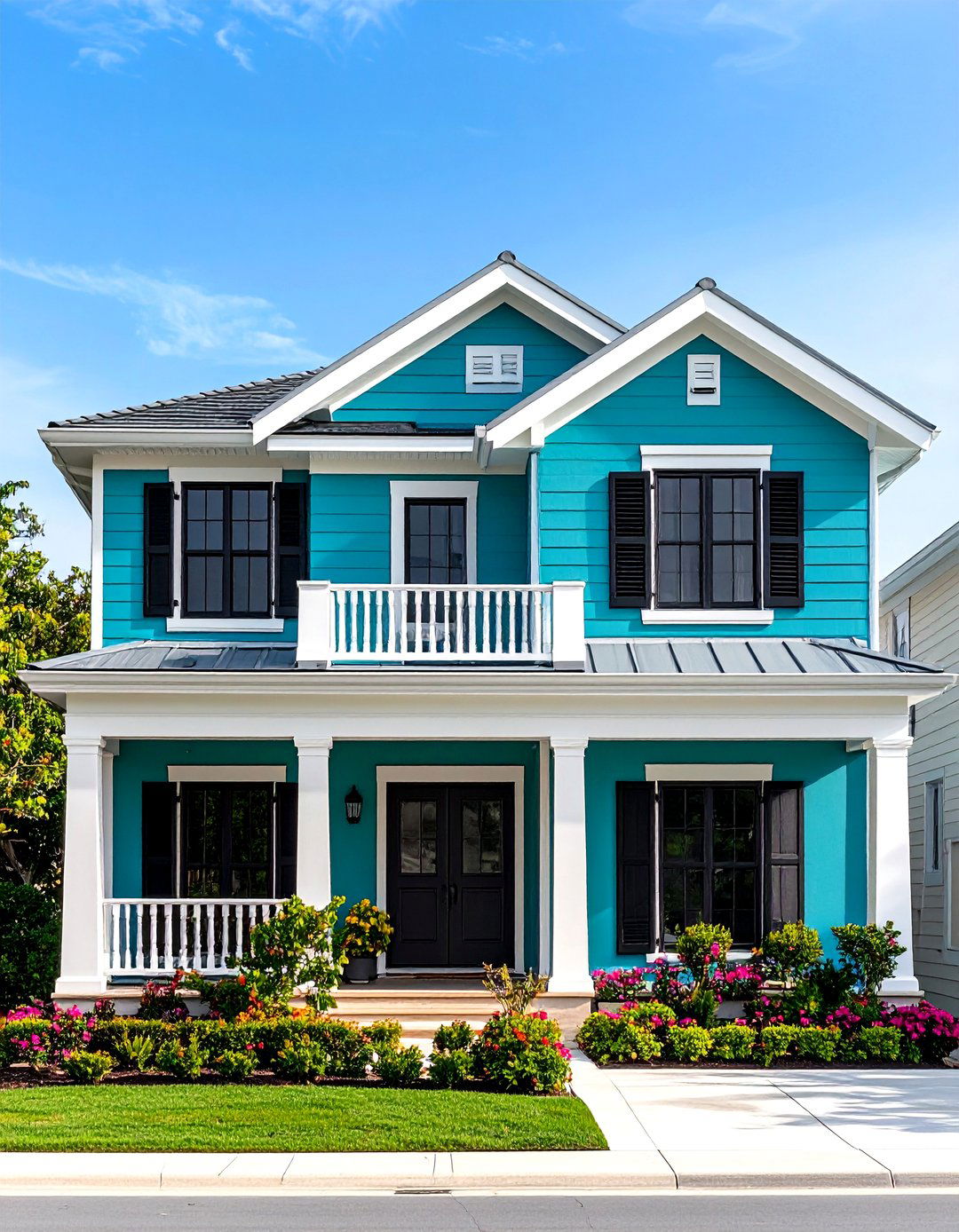
While light neutral hues are common with Mediterranean style homes, the style also leaves room for bright colors like pinks, reds, and blues. Designers used Sherwin Williams' Freshwater to revive stucco with a bright burst of turquoise, adding bright white trim and black window trim to keep the palette bold and crisp. Bolder or darker stucco colors, such as earthy terracottas or muted grays, can add a more modern or rustic touch while enhancing key architectural elements. Color choices can range from soft peach and warm yellow to rich terracotta and ocean blues. Colors that work well for Mediterranean-style stucco homes vary from white to warm gray to rich tones of light gold and brick. These vibrant exterior colors reflect the Mediterranean's coastal lifestyle and create homes that stand out while maintaining authentic regional character.
8. Mediterranean House Exterior with Pergola-Covered Outdoor Spaces
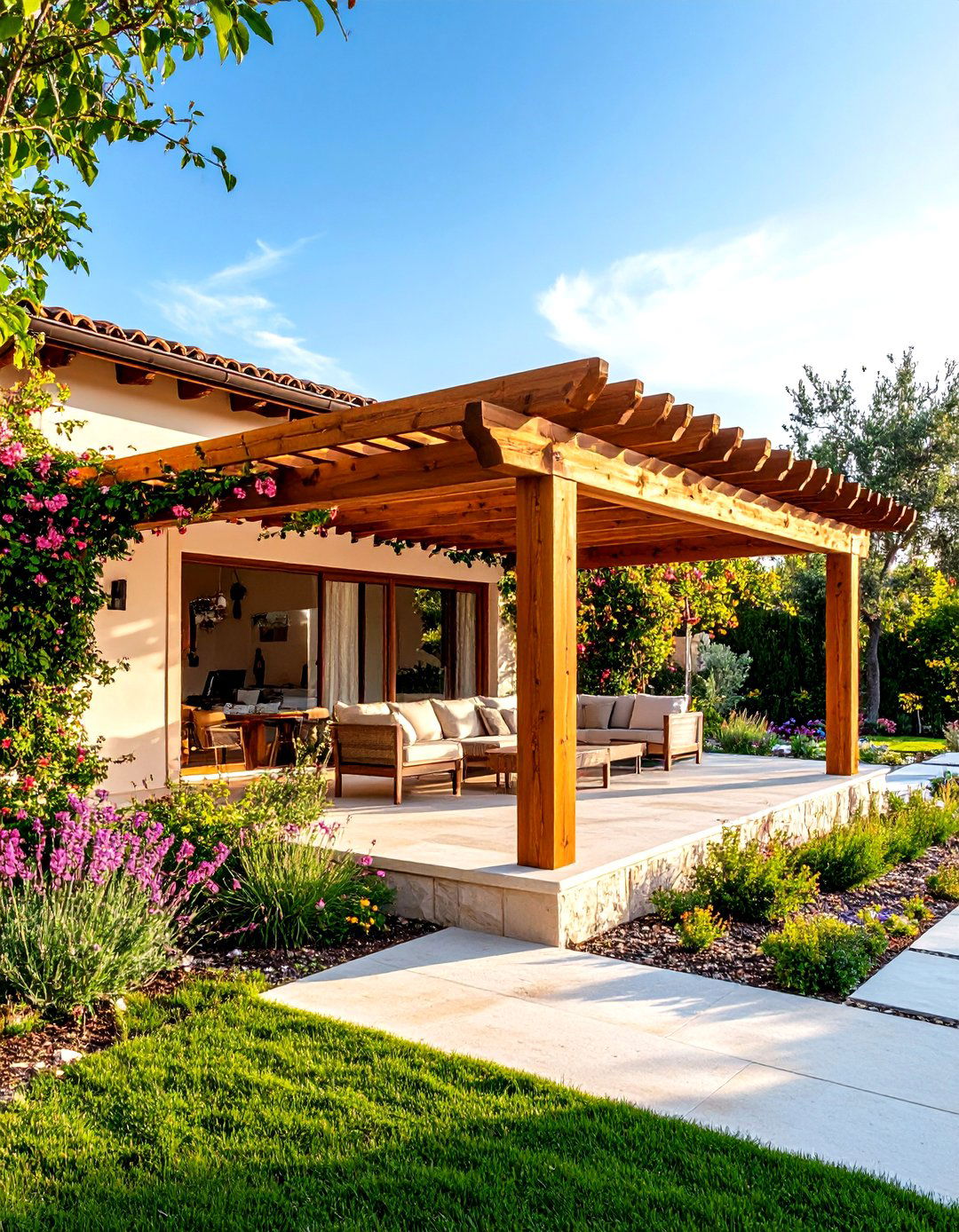
Adding a charming pergola draped with flowering vines creates a shaded entryway that evokes images of lazy afternoons in a Tuscan courtyard. The pergola structure provides necessary shade from the sun yet allows vines or bougainvillea to grow naturally and soften its appearance. These structures extend living spaces outdoors while maintaining the Mediterranean emphasis on indoor-outdoor connectivity. Pergolas can be constructed from wood, wrought iron, or a combination of materials that complement the home's architecture. The design combination of outdoor functional space with pergolas creates traditional and intimate environments. They work beautifully over patios, walkways, and pool areas, providing definition and creating natural outdoor rooms. The interplay of light and shadow through the pergola structure adds dynamic visual interest throughout the day while supporting climbing plants that enhance the Mediterranean garden aesthetic.
9. Mediterranean House Exterior with Water Feature Integration
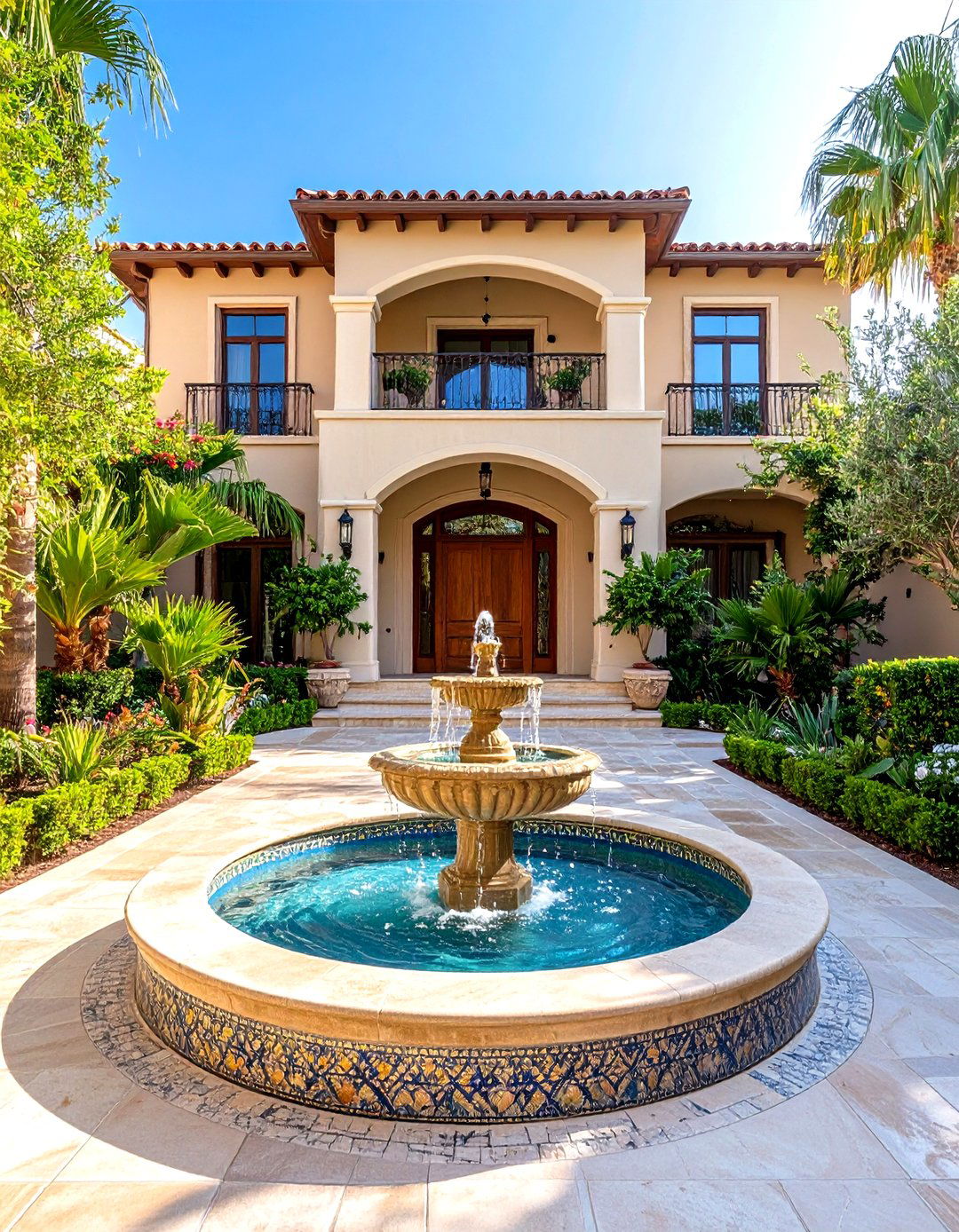
Water fountains or features are quintessential in Mediterranean landscapes, offering a sense of tranquility and luxury when positioned in courtyards, gardens, or near entryways. These elements often feature classical designs with stone or ceramic materials, and the soothing sound of flowing water creates a relaxing atmosphere while cooling the surrounding area. Designers replaced the stone near the small fountain by the stairway with patterned tiles and a bigger, black fountain that stands out against the tile. Fountains can range from simple wall-mounted designs to elaborate multi-tiered centerpieces. Consider installing a bubbling fountain or ornate tilework around your front door to create a focal point that draws the eye. The integration of water features enhances the Mediterranean's connection to the sea and creates cooling microclimates in outdoor spaces.
10. Mediterranean House Exterior with Mixed Material Facade
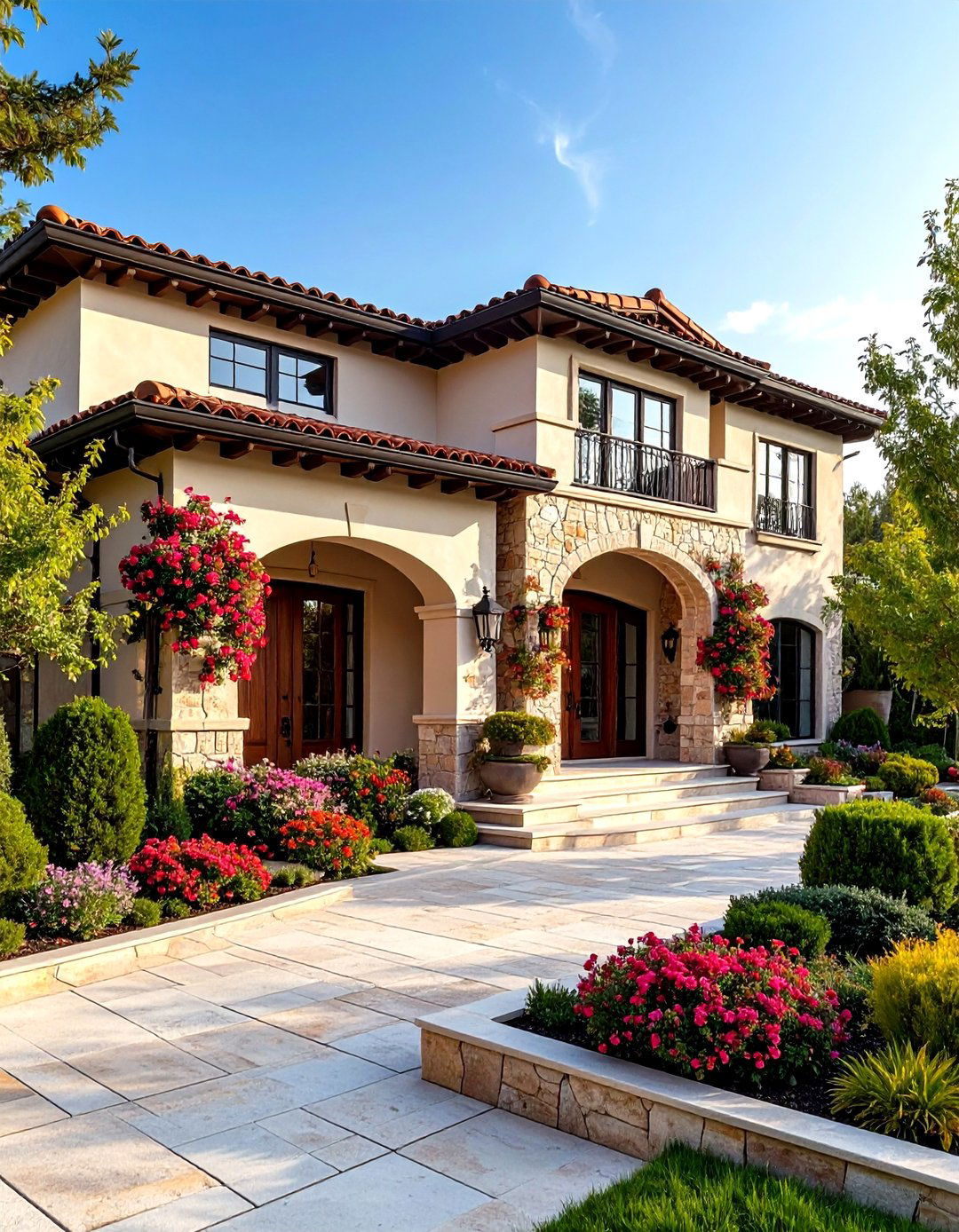
Mediterranean homes often feature combinations of brick and stucco exteriors with arched entryway facades and red ceramic tile roofs. This mixed-material approach creates visual texture and depth while maintaining cohesive design principles. The mix of stucco and stone creates contemporary accents that maintain visual interest. Materials can include smooth stucco, natural stone, decorative tile, and wrought iron elements that work together harmoniously. Stone cladding on exteriors adds texture and dimension, and designers often limewash stone to blend with stucco. The key is selecting materials that complement each other in color and texture while serving different architectural functions. Wood elements, such as shutters or doors, can add warmth and contrast to the predominantly mineral palette, creating a rich, layered appearance that reflects Mediterranean craftsmanship traditions.
11. Mediterranean House Exterior with Symmetrical Classical Design

Mediterranean style buildings are often more than two stories high with symmetrical features, including palladium style windows, columns, and low-pitched tile roofs. The Italian Renaissance style drawing inspiration from Italian Renaissance buildings is marked by columns and rounded arches. This formal approach emphasizes balanced proportions and classical architectural elements. Decorating relies on the principle of symmetry to showcase the beauty of the style, using pairs of chairs, pairs of sofas, and pairs of sconces. Often doorways are arched with keystone style details, and the edges of exterior walls use coin treatment. The symmetrical design creates a sense of order and grandeur that reflects the formal Mediterranean villa tradition. This approach works particularly well for larger homes where the scale can support the classical proportions and architectural details that define this elegant style.
12. Mediterranean House Exterior with Outdoor Kitchen Integration
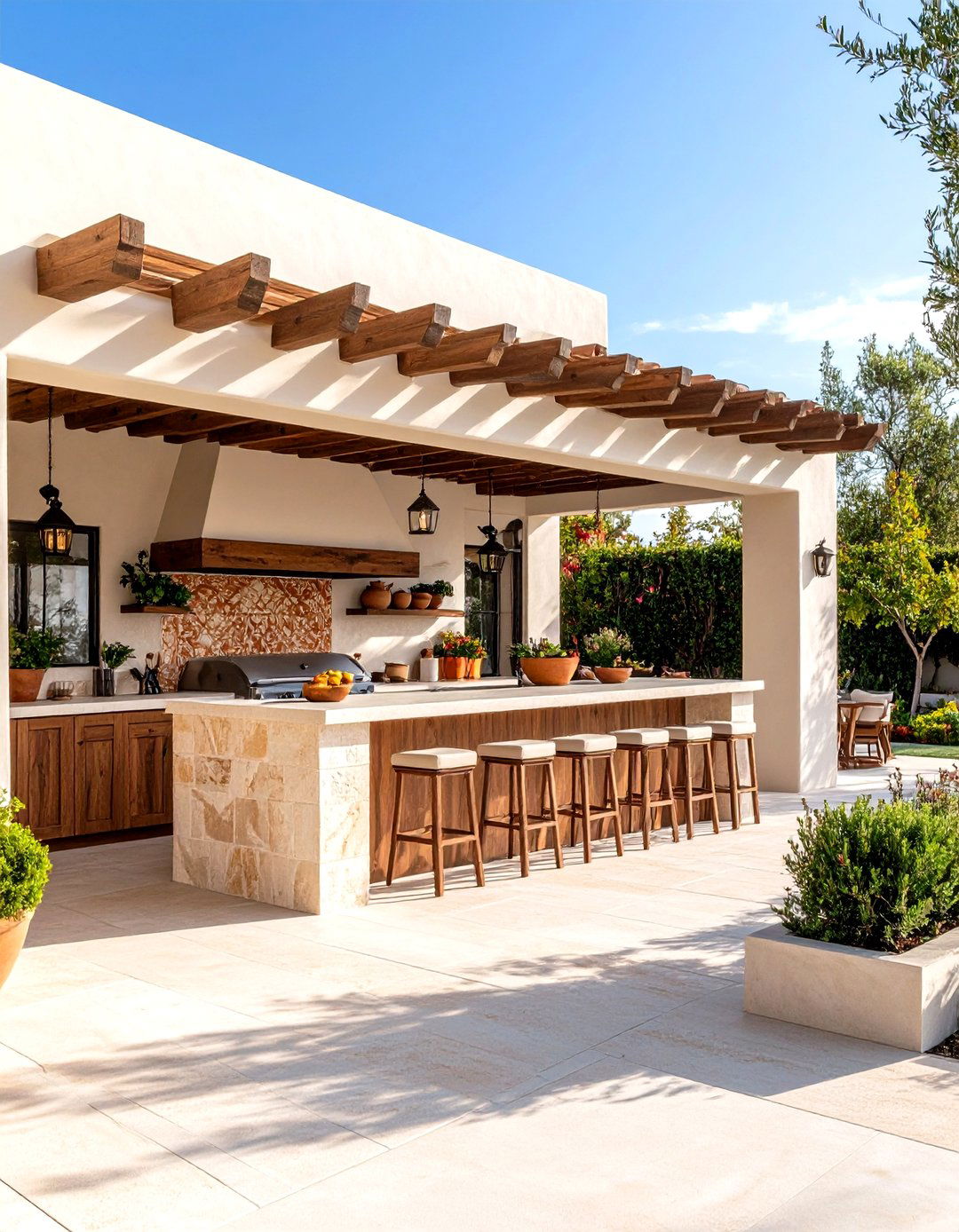
Outdoor kitchens receive shaded pergola installations followed by vintage lanterns or Edison bulbs for creating evening atmosphere, allowing connection between present and past living styles. The rustic appearance is strengthened through the combination of pottery displayed on open shelves with wooden prep tables and cast-iron utensils. These outdoor culinary spaces embody the Mediterranean lifestyle's emphasis on alfresco dining and entertaining. Consider adding a cozy outdoor fireplace to create the perfect space for alfresco dining and entertaining under the stars. The design typically incorporates natural materials like stone countertops, terracotta tile backsplashes, and wood-fired ovens that enhance the authentic Mediterranean experience. Designers completely transformed hardscapes and accentuated spaces with plants and ornate fixtures to complement stucco and red barrel tile roofs. These functional outdoor spaces extend the home's living areas into the landscape.
13. Mediterranean House Exterior with Textured Stucco Finishes
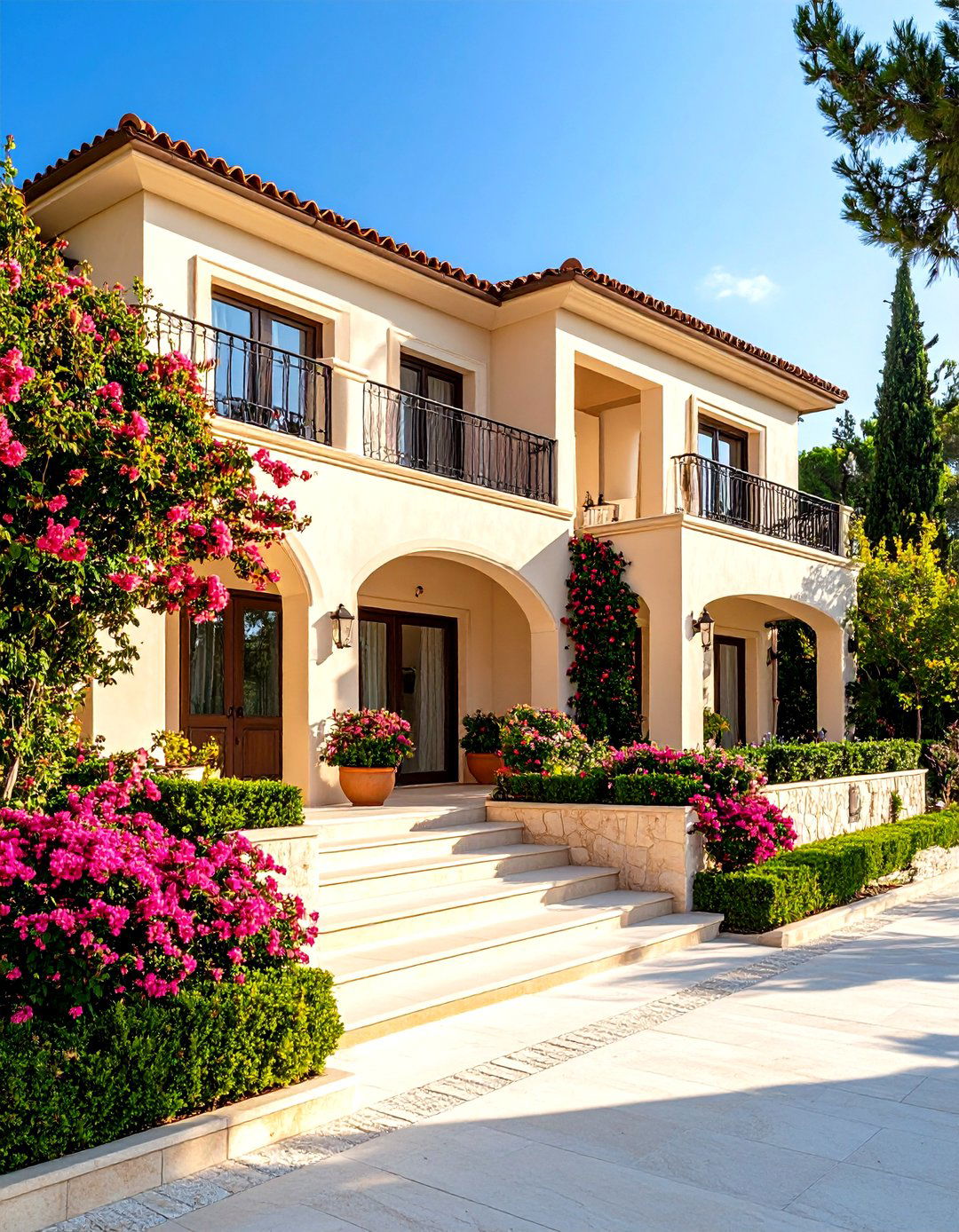
The textured finish lends depth and character to Mediterranean homes, with subtle textures that add understated elegance. Textured walls and earthy tones create spaces that feel organic, relaxed, and sophisticated. Different stucco application techniques can create various surface treatments, from smooth venetian plaster to rough-troweled textures that catch light and create visual interest. The warm, creamy beige stucco finish with smooth texture exudes sophistication and warmth. These finishes can be enhanced with lime washes or colored pigments that add depth and richness to the surface. The soft peach-toned stucco finish with smooth texture gives an inviting presence. The interplay between light and shadow on textured surfaces creates dynamic facades that change throughout the day, adding life and movement to the Mediterranean exterior while maintaining the style's inherent warmth and character.
14. Mediterranean House Exterior with Loggia and Covered Porches

Mediterranean style homes include patios or loggias to catch breezes, with large windows and exposed beams creating shady overhangs. Some favorite Mediterranean style homes harness an indoor-outdoor flow, with squared-off openings on the lanai bringing more natural light to the area. These covered outdoor spaces provide essential shade while maintaining connection to the landscape. The style seamlessly blends indoor and outdoor living spaces through covered loggias, courtyards, and expansive terraces. Loggias typically feature columns or arches that support the roof structure while creating elegant transitions between interior and exterior spaces. Mediterranean style homes often emphasize outdoor spaces, with designers completely transforming hardscapes and accentuating spaces with plants and ornate fixtures. The combination of solid roofing with open sides creates comfortable outdoor rooms perfect for the Mediterranean climate and lifestyle.
15. Mediterranean House Exterior with Decorative Tile Accents
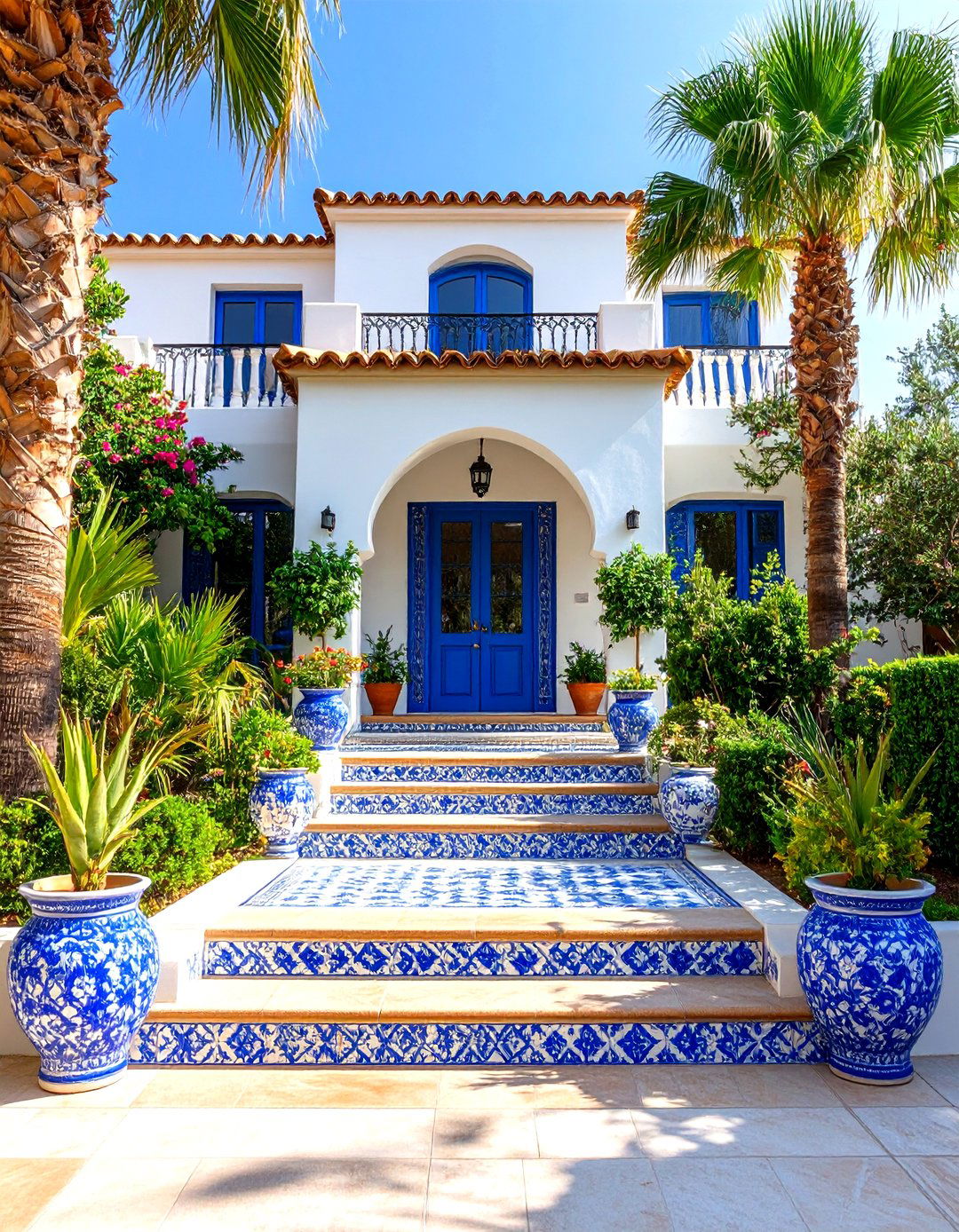
Bright, colorful tiles are common features, with painted blue-and-white Moroccan tiles being classic Mediterranean house elements. Designers replaced stone near fountains with patterned tiles that create stunning focal points against neutral backgrounds. Ornate tilework around front doors creates focal points that draw the eye and set the stage for Mediterranean-inspired interiors. Decorative tiles can be incorporated in various ways, from intricate backsplashes around outdoor kitchens to geometric borders around windows and doors. These tile accents look amazing when used in both indoor and outdoor spaces, with generous budgets allowing for extensive use. The vibrant colors and intricate patterns in ceramic tiles add personality and cultural authenticity to Mediterranean exteriors. Hand-painted tiles featuring traditional motifs create unique artistic elements that reflect the rich ceramic traditions of the Mediterranean region.
16. Mediterranean House Exterior with Landscaped Entry Gardens

Transform outdoor spaces into Mediterranean oases with lush greenery and vibrant pops of color, featuring fragrant lavender and rosemary bushes lining winding pebble pathways. Incorporate classic Mediterranean elements like terracotta pots filled with colorful bougainvillea or fragrant lavender to infuse front yards with Southern European charm. Garden paths serve as functional pathways but also present visual opportunities through multiple sensory engagements with texture, feel, and visual color elements. These gardens typically feature drought-tolerant plants that thrive in Mediterranean climates, including olive trees, citrus plants, and aromatic herbs. Landscaping plays an important role in Mediterranean design and curb appeal, with the overall palette being light and reflective with splashes of color in landscaping. The gardens create natural transitions between hardscaped areas and provide seasonal interest through flowering plants and textural foliage.
17. Mediterranean House Exterior with Modern Flat Roof Design
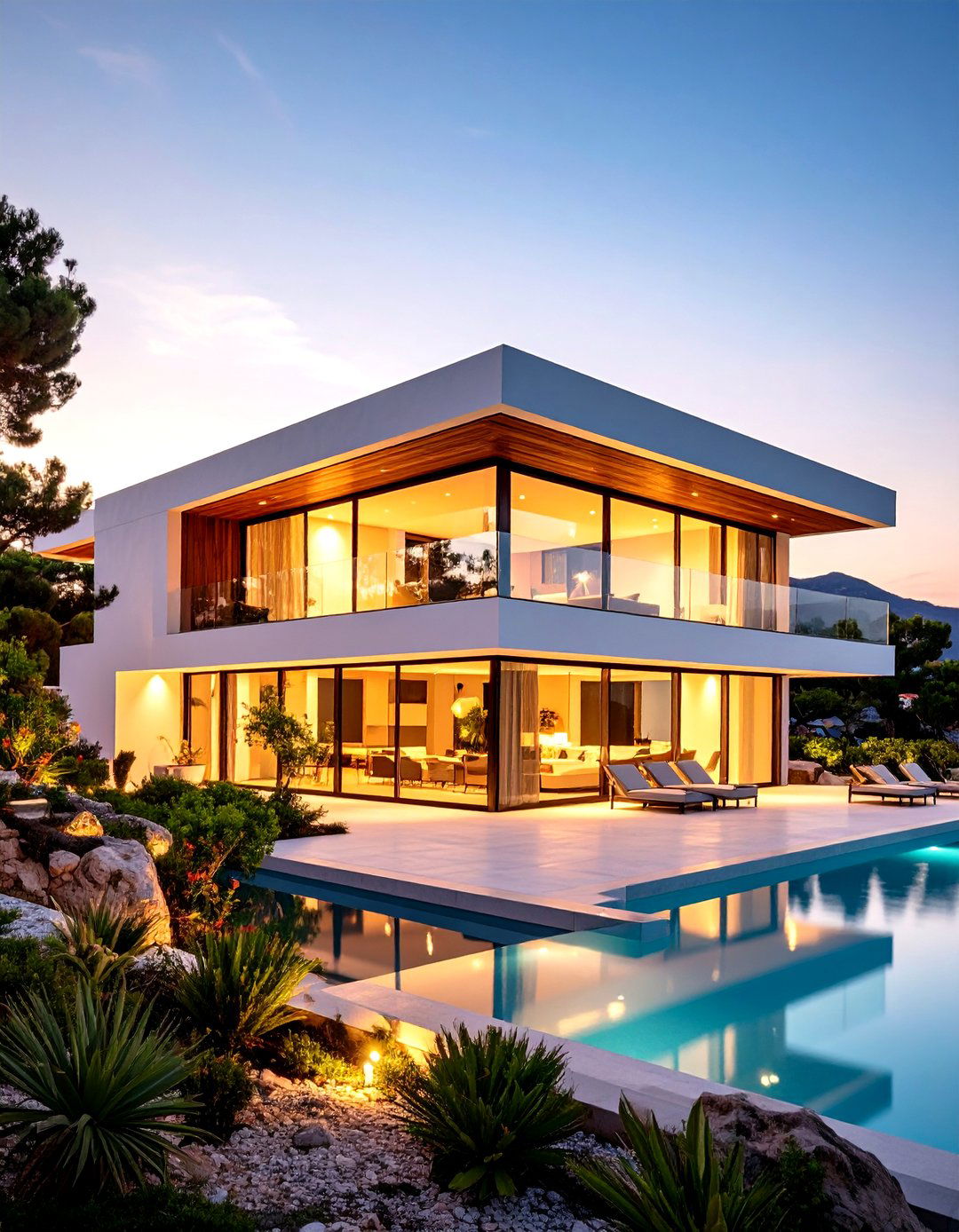
Neo-Mediterranean movement incorporates classic Mediterranean features with cleaner lines, more modest ornamentation, and improved functionality. This contemporary interpretation maintains Mediterranean warmth while embracing modern architectural principles. Contemporary Mediterranean designs prioritize optimal solar orientation, taking advantage of natural light while minimizing heat gain during summer months. Flat or low-sloped roofs can be designed with parapet walls that echo traditional Mediterranean proportions while accommodating modern building systems. Modern Mediterranean homes integrate automation systems that enhance comfort, security, and energy efficiency without compromising the traditional aesthetic. Large glass openings and clean geometric forms create striking contrasts with traditional stucco walls and natural stone accents. This approach appeals to homeowners seeking Mediterranean character within a contemporary architectural framework that emphasizes sustainability and modern living.
18. Mediterranean House Exterior with Multi-Level Terraced Design
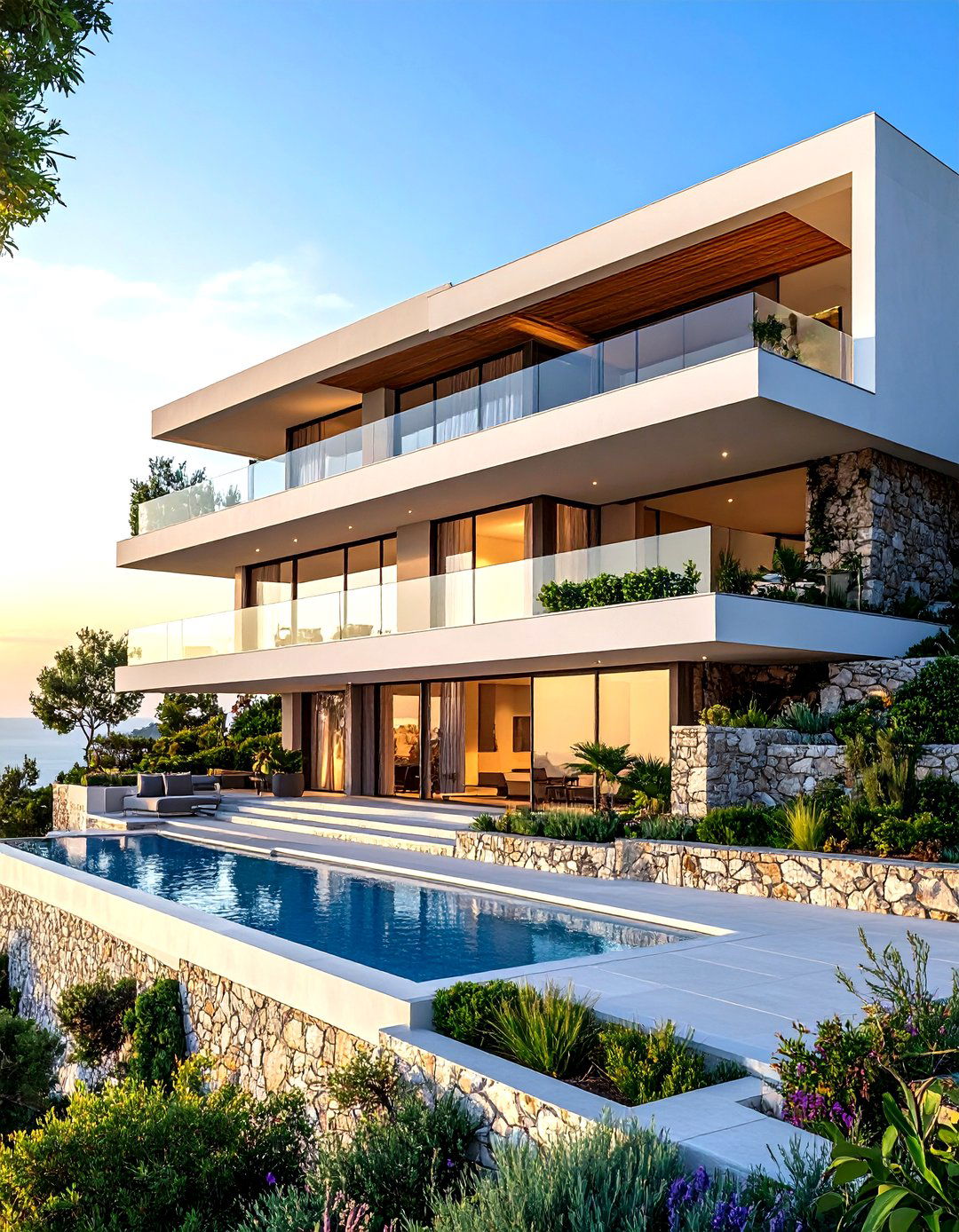
Mediterranean homes incorporate expansive terraces that create perfect outdoor entertaining spaces in warm climates. Luxury Mediterranean house exteriors often feature multiple balconies and wrap-around first floor porticos that create layers of outdoor living space. These terraced designs work particularly well on sloped sites where different levels can be carved into the landscape. Designers filled in hardscapes and squared off openings to bring more natural light to areas, which is crucial in Mediterranean-style design. Each terrace level can serve different functions, from intimate seating areas to larger entertainment spaces. The layout provides designers with plenty of room to fill in hardscape and create outdoor spaces that emphasize the Mediterranean indoor-outdoor flow. Retaining walls can be constructed from natural stone or stucco to match the home's architecture while creating planting opportunities for cascading Mediterranean vegetation.
19. Mediterranean House Exterior with Rustic Wooden Shutters
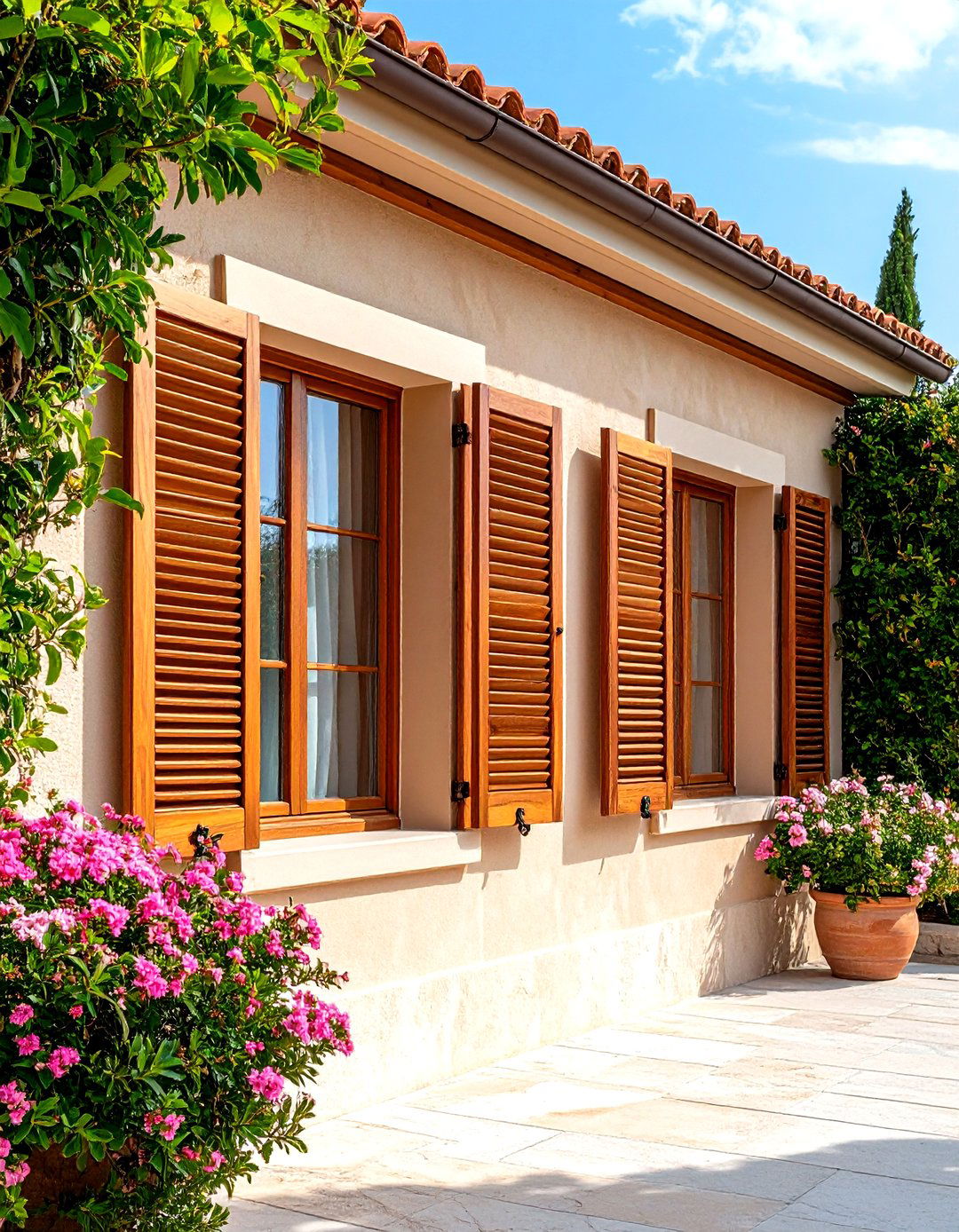
Large windows framed by wooden shutters invite natural light and sea breezes, creating an airy atmosphere throughout Mediterranean homes. Dark brown wood on trim and shutters coordinates especially well with warm stucco walls and wrought iron metalwork. These functional elements provide privacy and sun control while adding authentic Mediterranean character. Designers opted for black shutters for contrast, but traditional wooden shutters in natural or painted finishes are equally effective. The shutters can be operational or decorative, depending on the home's specific needs and architectural requirements. These colors work well with terracotta roof tiles and darker colored wooden shutters. Wood species like cedar or teak naturally weather to beautiful patinas that enhance the Mediterranean aesthetic. The rhythm of shuttered windows across the facade creates visual interest and helps break up large expanses of stucco wall surface.
20. Mediterranean House Exterior with Luxury Estate Features

Luxury Mediterranean house exteriors often feature turrets, wrap-around first floor porticos, and multiple balconies that create grand architectural statements. These Mediterranean house plans incorporate pure home design elements displaying traditional features such as barrel-tile roofs, arched windows, and terracotta tiled courtyards. Luxury Mediterranean style house plans are tremendously well-appointed with the finest details, ranging from modest waterfront homes to well over 10,000 square foot luxury mansions. These grand designs often include formal entrance porticos, multiple chimneys, and elaborate stonework that reflect the opulent villa traditions of Mediterranean estates. These plans incorporate cutting-edge amenities to make rooms infinitely livable and functional, with beautiful outdoor areas that stun visitors. The scale and proportion of these luxury exteriors create impressive curb appeal while maintaining the Mediterranean style's inherent connection to outdoor living and entertaining.
Conclusion:
Mediterranean house plans continue to evolve, combining timeless elegance with modern functionality to create homes that resonate with contemporary lifestyles. These 20 exterior design ideas demonstrate the versatility and enduring appeal of Mediterranean architecture, from traditional terracotta roofs to modern interpretations with clean lines. Whether incorporating classic elements like wrought iron balconies and stucco walls or embracing contemporary features like flat roofs and large glass openings, Mediterranean exteriors offer endless possibilities for creating stunning, functional homes that celebrate indoor-outdoor living and connect us to the timeless beauty of coastal European design.


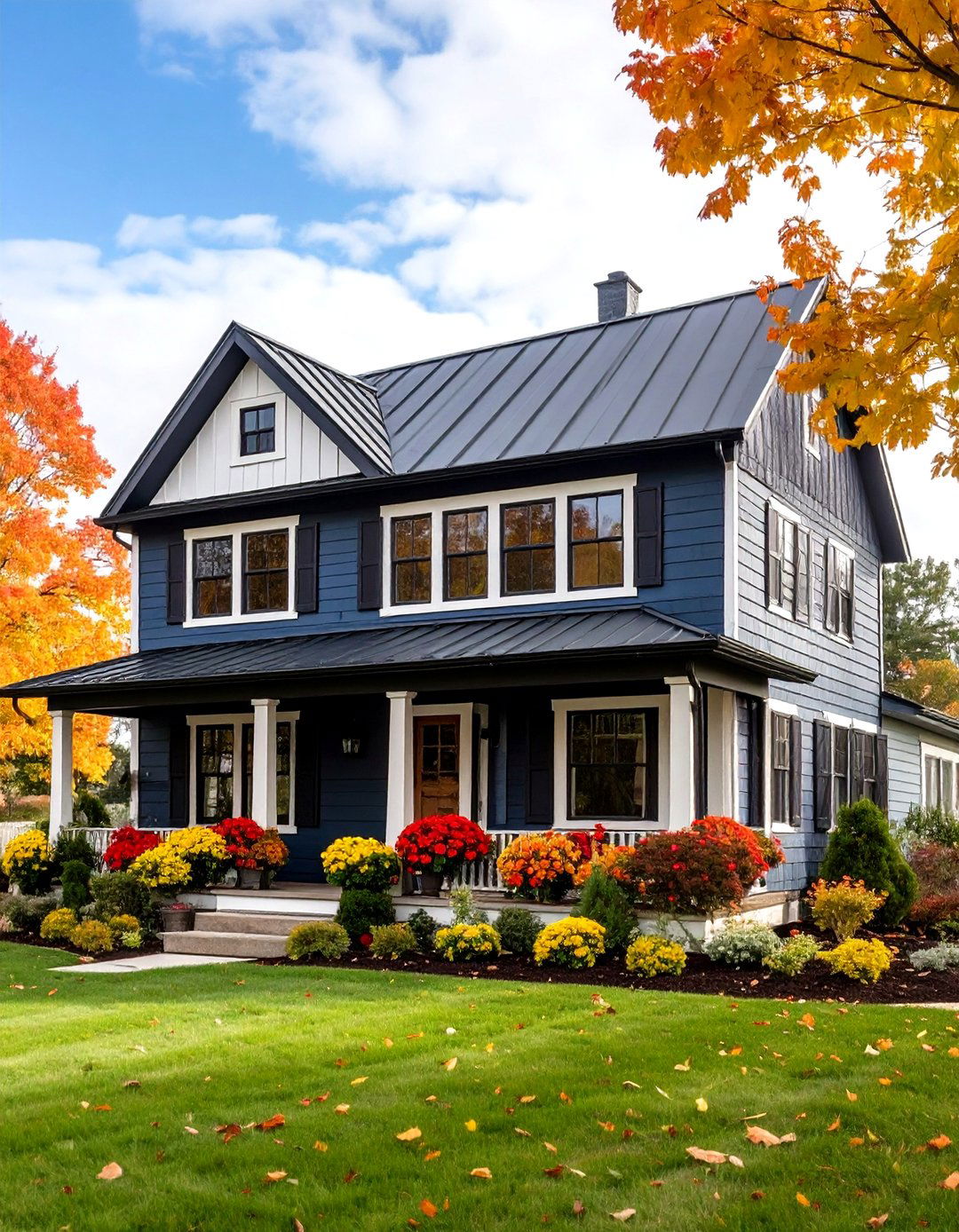

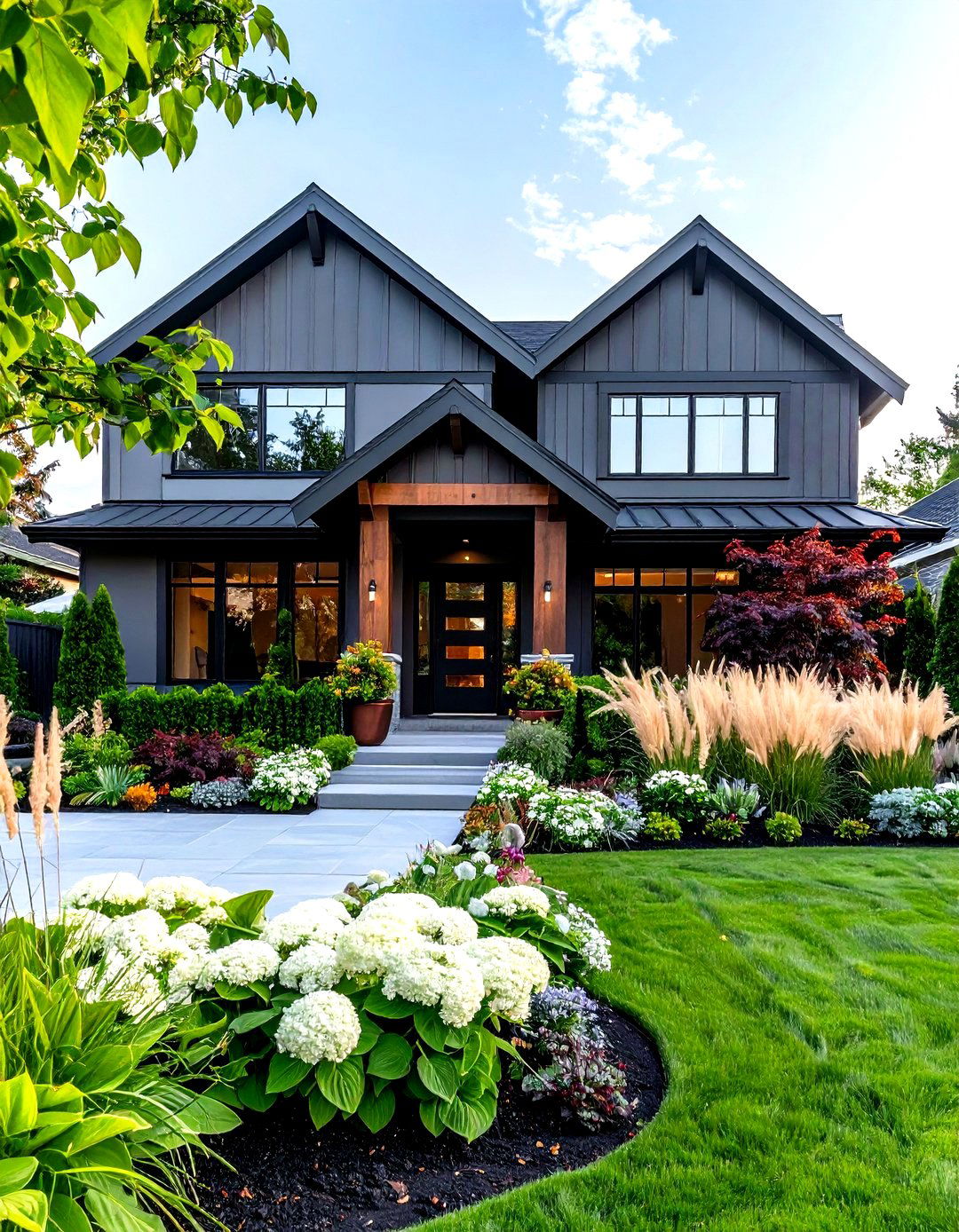


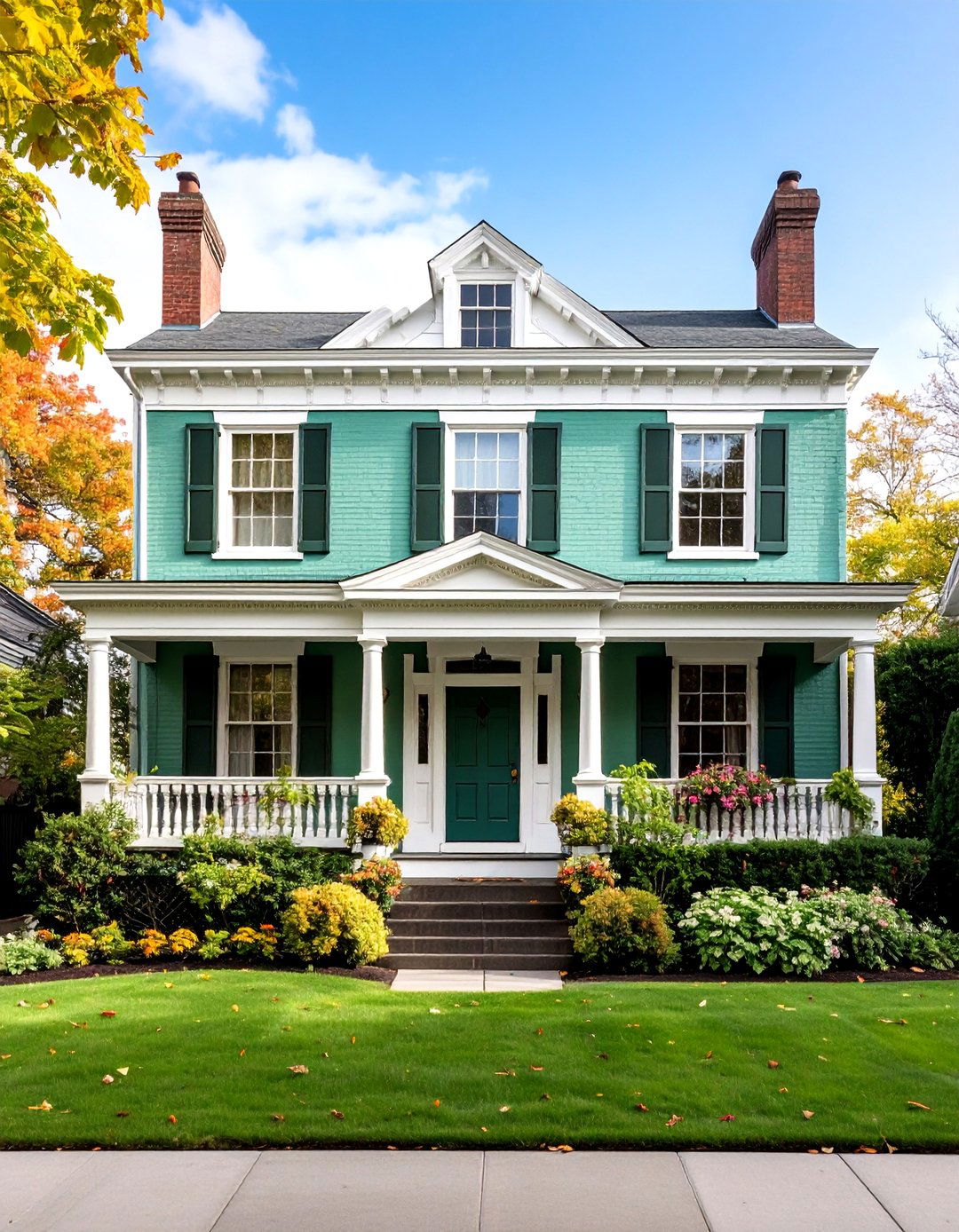
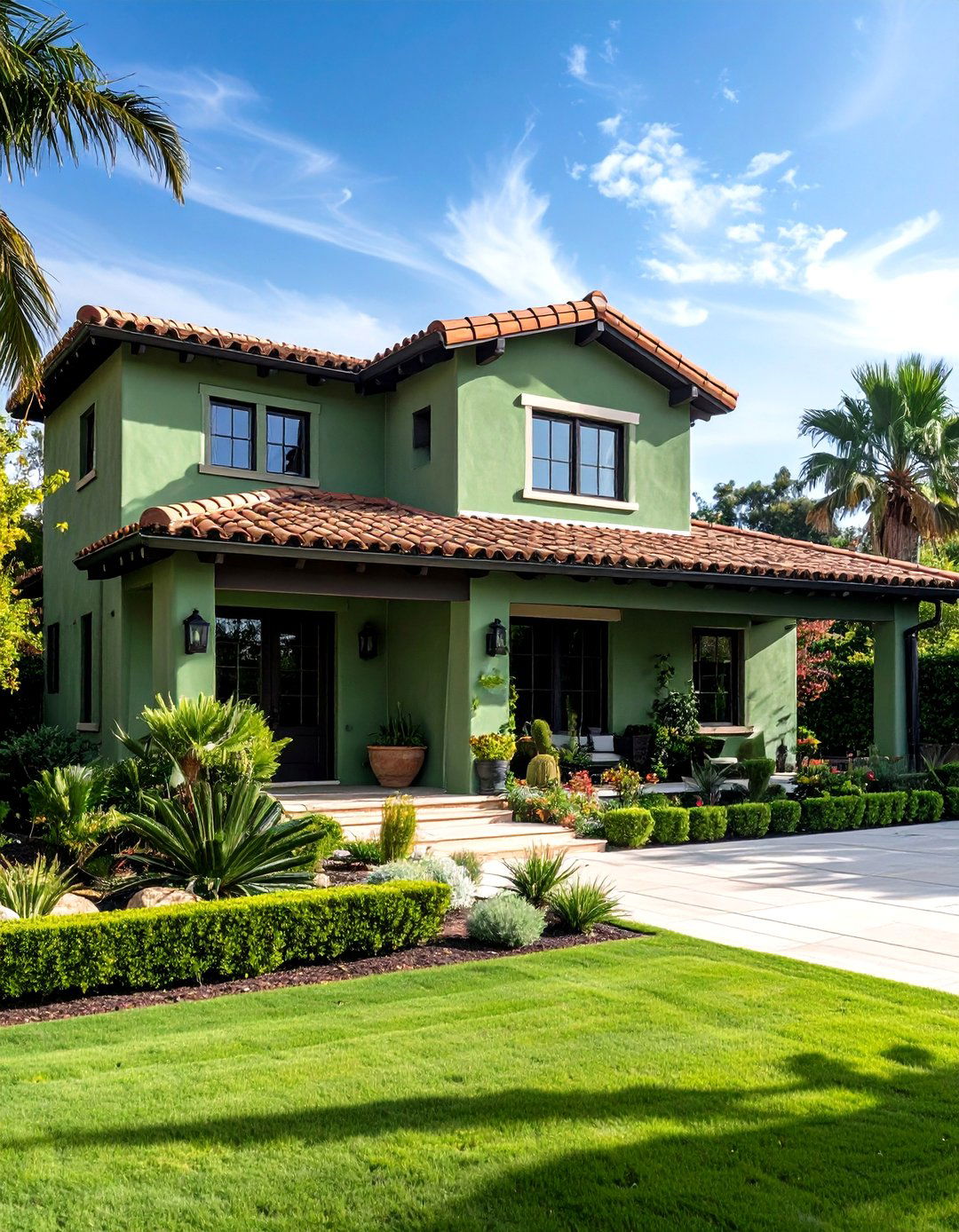

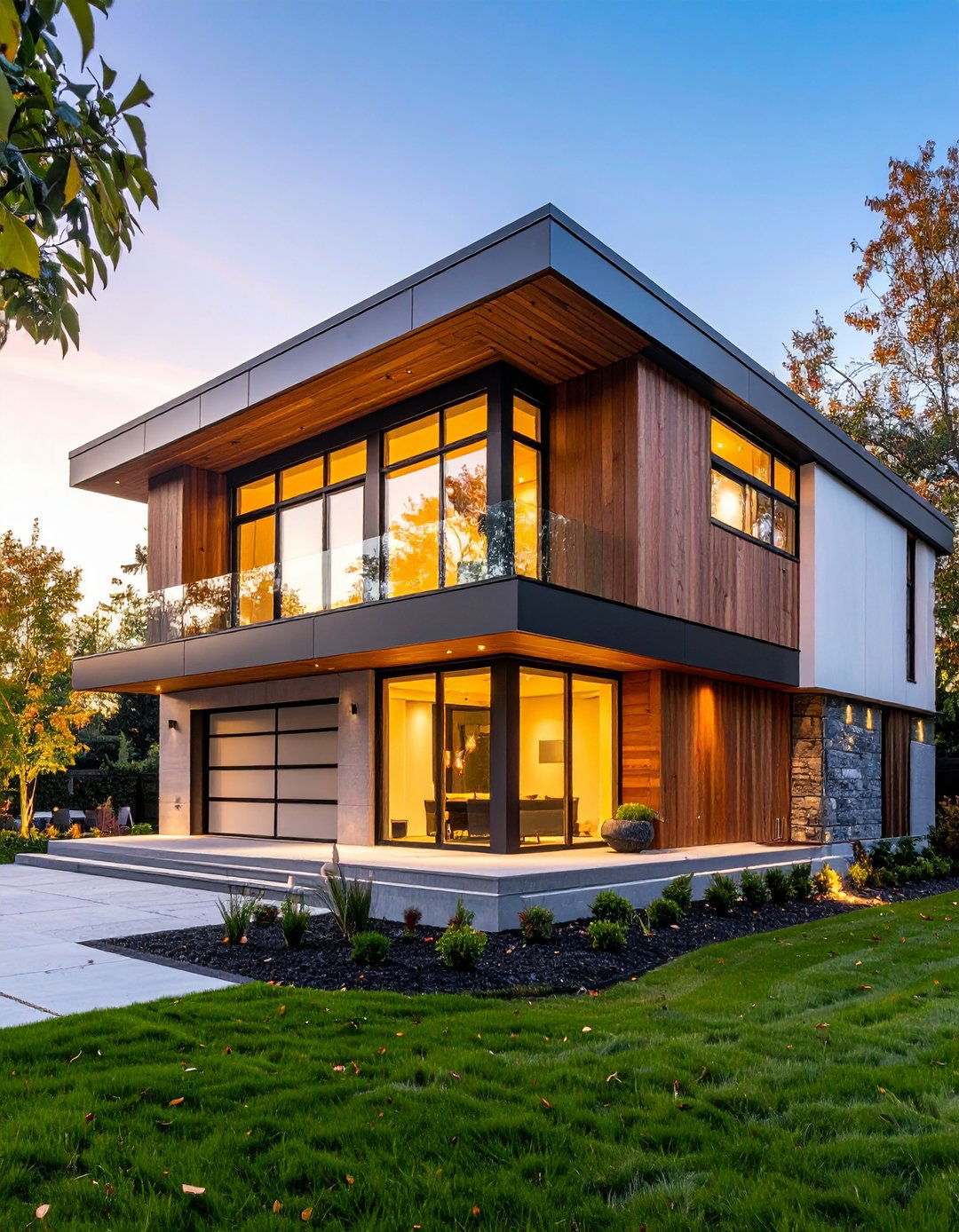
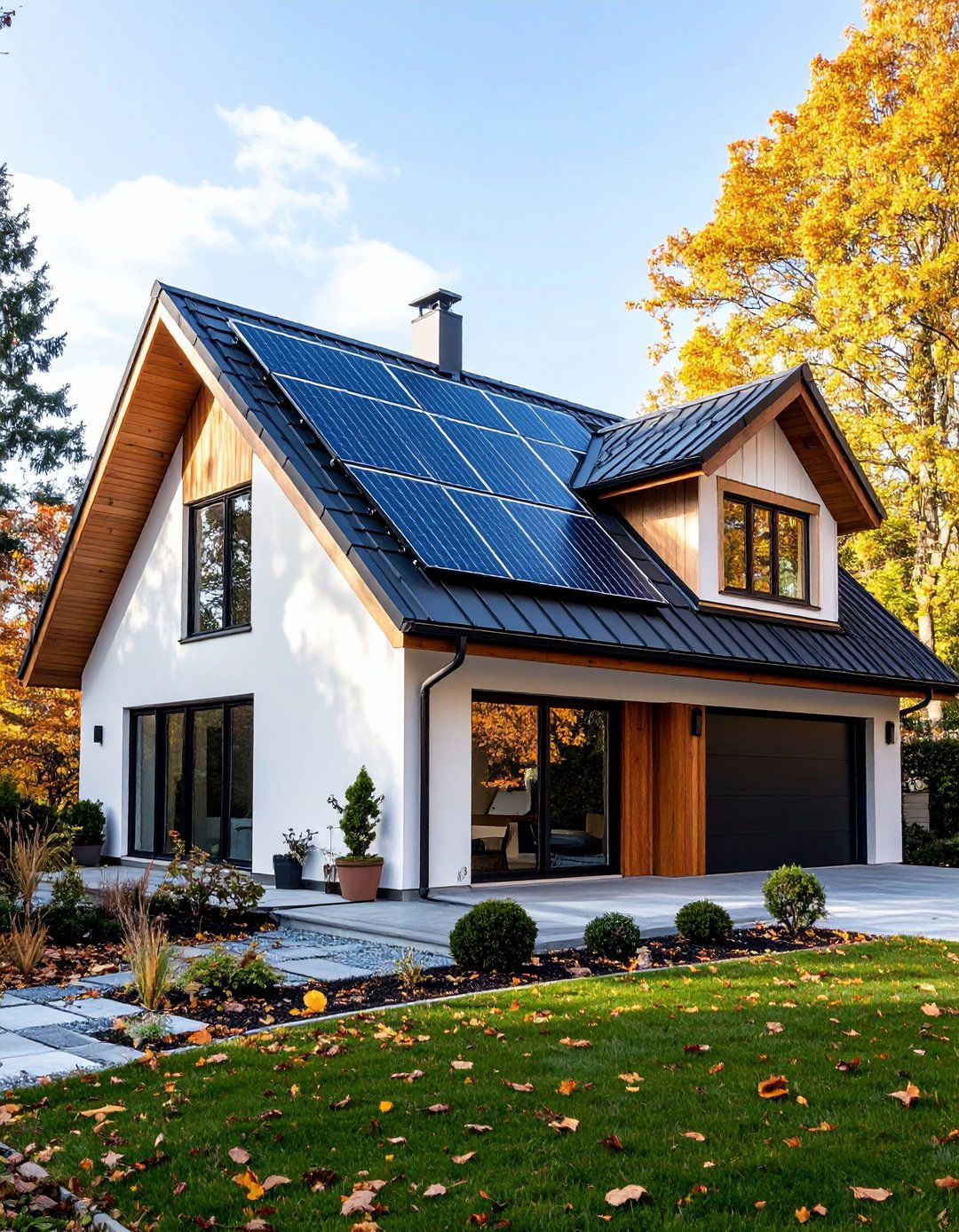
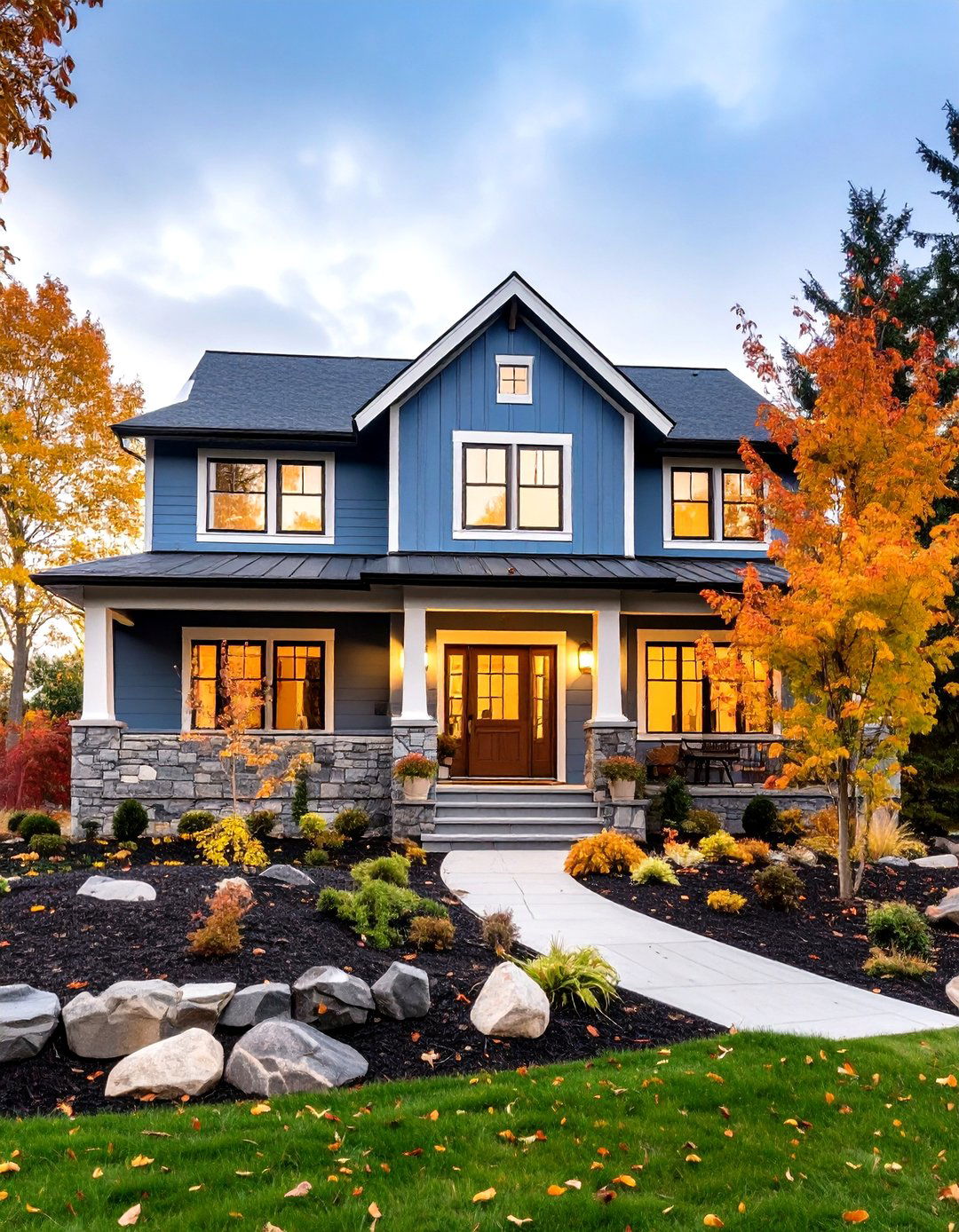
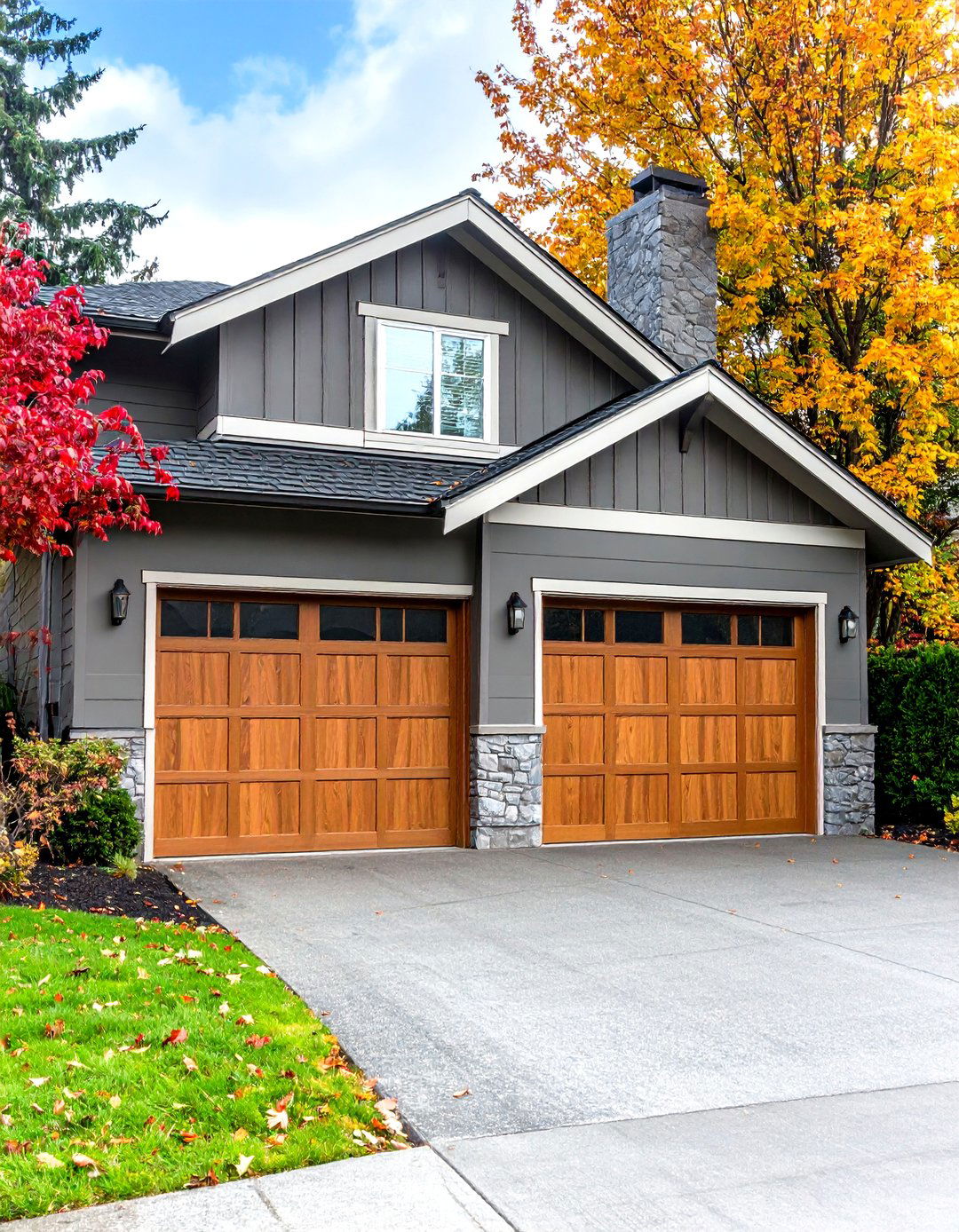
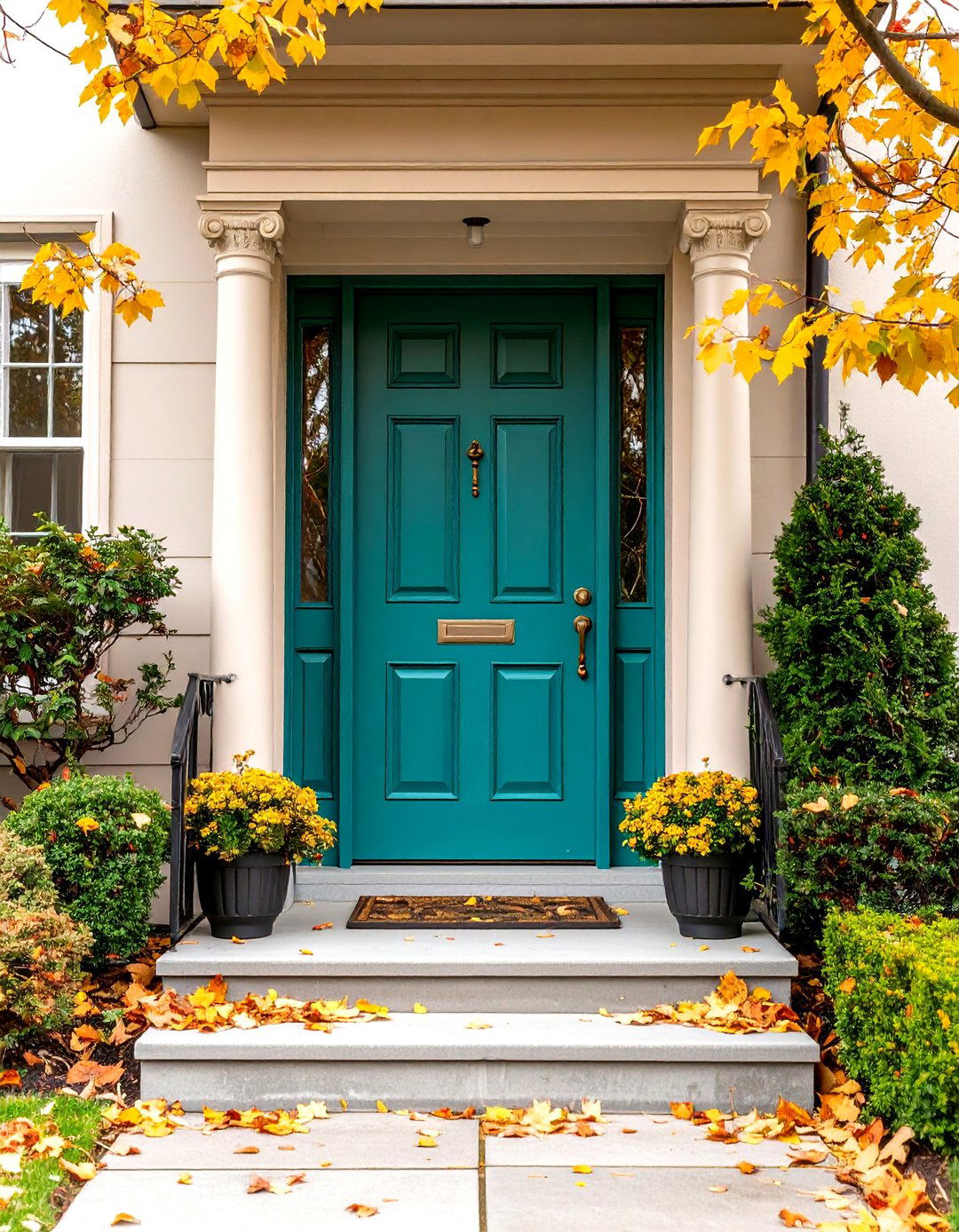

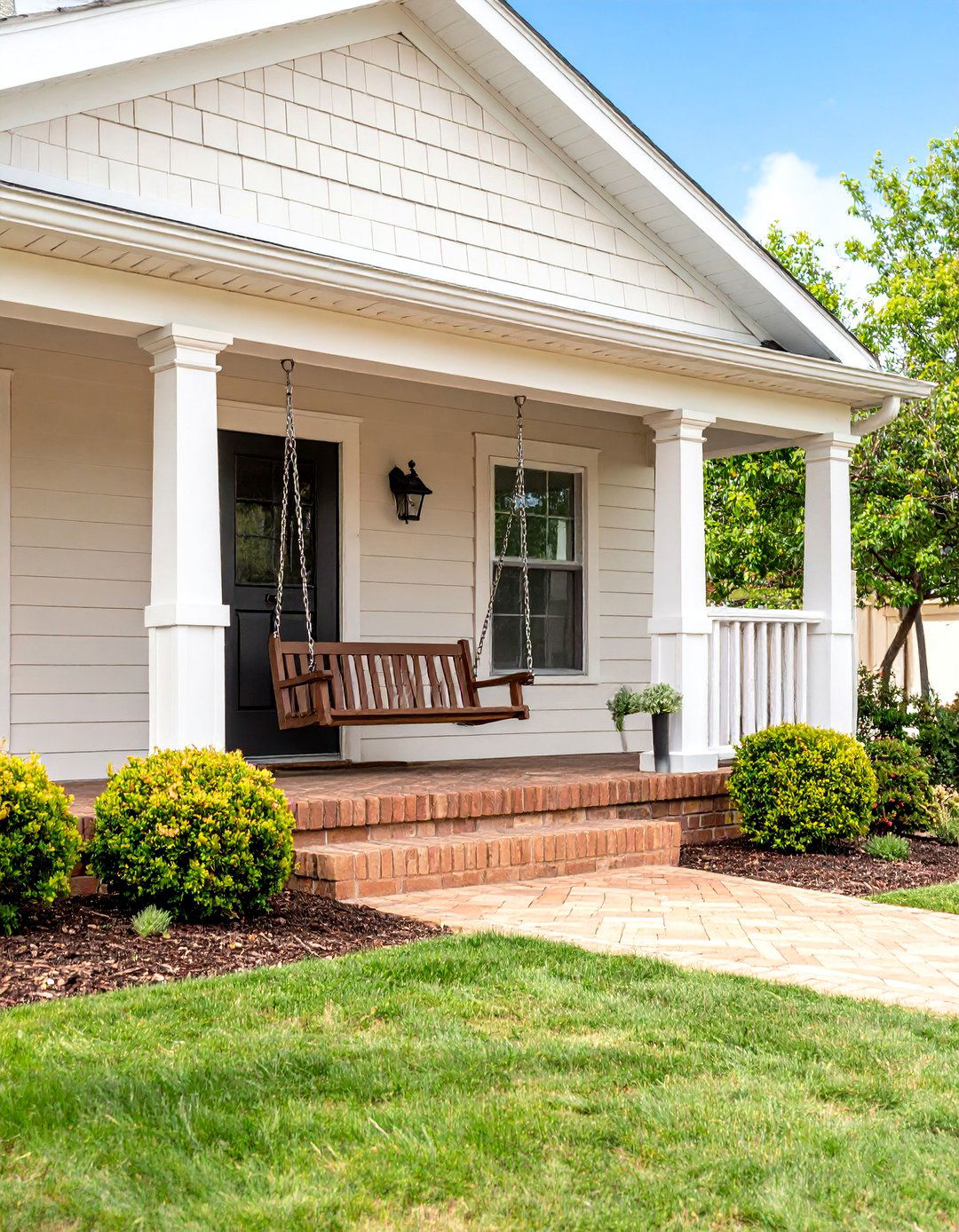
Leave a Reply